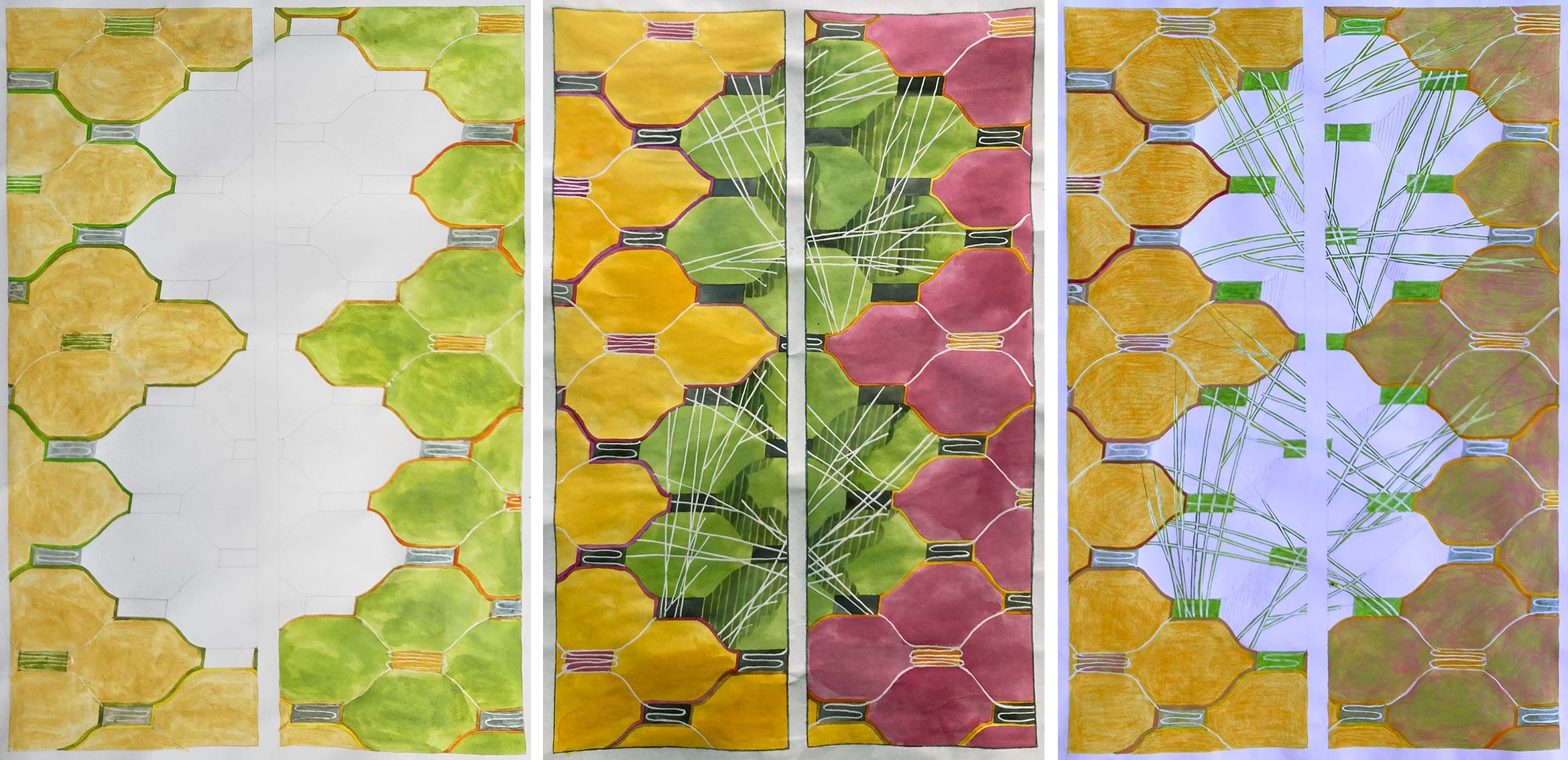Design for back door window panels, 3 versions, 2022.
The design for my latest commission, glass panels in a back door, was going well but there were large spaces in the middle of it that needed filling. In the end, I went with a motif I use a lot and that is based on tree branches (above). These days I don’t feel the need to go to the forest and draw the shape of the branches, instead I make them go in whatever direction is best for the design.
Illustrations by Jan Pienkowski for The Kingdom Under The Sea by Joan Aitken, 1971
Ray reminded me that we have been having the same discussion about how best to draw branches since we were students in the early 1980s. It’s one thing to go out drawing in the summer when leaves add more detail while also simplifying the shape of the whole tree, but quite another thing in winter when the shape of the branches are defined against the sky or the landscape. We came to the conclusion then that the Jan Pienkowski route, where branches are silhouettes, was a good way to go. These illustrations (some examples above) were favourites from our childhoods, and looking at them now I consider him to be an artistic influence.
I said Tell me the Truth, drawing by Ray Ward (left) stained glass by me (right) 2020.
Take this Ray Ward drawing (above) where the trees were from a memory of a scene in Cornwall. When I came to do the stained glass version I didn’t want to change a twig, so I painted the branches on a piece of purple streaky glass placed on top of a photocopy of the original drawing.
The Prophecy of Anguish, painting by Ray Ward, 2021.
Ray’s black and white egg tempera painting on gesso (above) has a design for bare branches that I find even more impressive. The curviness of the ancient tree with its feeble looking branches is offset by a web of sharp twig lines behind and a pattern of vertical lines over the trunk in the foreground.
The State Hospital, Carstairs, detail of glass screen and design, 2011.
Looking for examples of branch techniques in my own work led me to a screen I made for the top security State Hospital in Carstairs, Scotland (above). In this design the pine branches cross bands of vertical lines that descend at a 90° angle from the pitch of the roof as if they are part of a woven cloth, where small twigs alternate with patterns of squares in the white cloudy sections.
Premier Inn, Liverpool, detail of corner window and design, 2012.
Sometimes when the work is for a public commission, the subject matter needs to be optimistic and a few leaves are required to indicate that spring is on its way. Leaves don’t suit my style as much as branches do, but I found an example of cherry tree branches from a large corner window I designed for the Premier Inn on Hanover Street, Liverpool - an area once full of market gardens and ornamental trees but now much in need of any type of greenery.

































